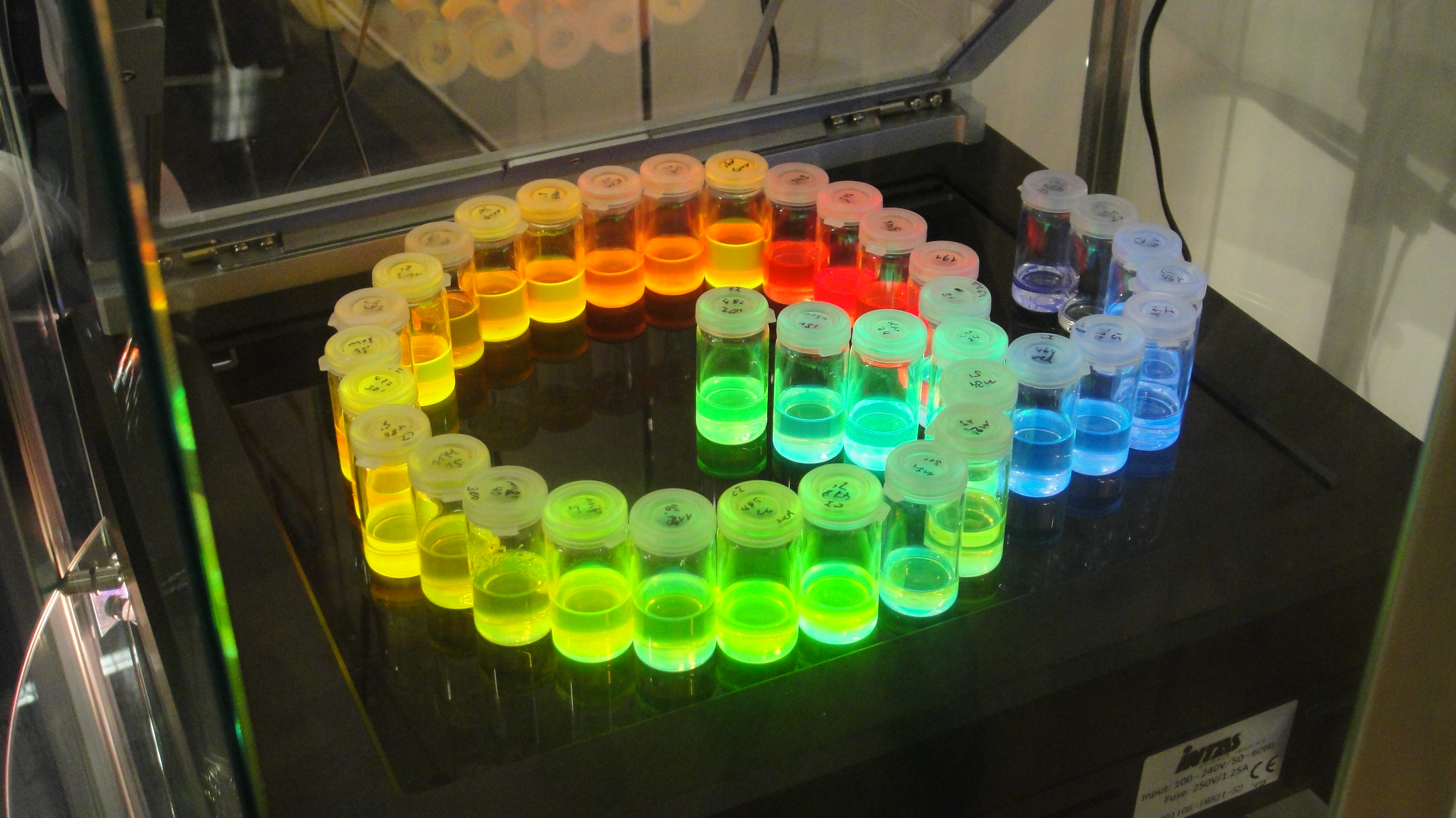Highly Efficient, Cadmium-Free Quantum Dots for QLEDs and Solar Cells
Quantum dots (QD) are a new class of fluorescent nanomaterials. Extremely brilliant colors can be created very efficiently with the tiny nanocrystals. Their absorption and emission properties can be customized in a unique way by changing the particle size. Modifying the surface of the particle tailors it to its chemical environment. Almost the entire spectral range is available by means of targeted synthesis.
These unusual properties enable applications in very different areas such as in luminescent materials, display technology, for upconversion in photovoltaics, or for security features in banknotes.
However, conventional QDs contain the toxic heavy metal cadmium. The synthesis of cadmium-free quantum dots is developed at Fraunhofer IAP for this reason. These are based on environmentally friendly indium phosphide (InP / ZnS multishell QDs) and can be used as fluorescent material for LEDs, as emitting material in OLEDs or as filters for the LED back lighting of LCDs, with which a higher color brilliance of the LCD display is achieved.
Infrared-active QDs based on copper indium sulfide (CulnS2-QDs) can also be used in solar cells to increase efficiency.
In comparison to conventional QDs, the cadmium-free materials from Fraunhofer IAP also attain high quantum yields. Up to several grams of cadmium-free QDs can be manufactured per hour with the aid of a flow-through reactor that can run continuously.
These can then be printed on solid and flexible carrier materials, just as in an inkjet process. A pilot facility is available at Fraunhofer IAP.
 Fraunhofer Materials
Fraunhofer Materials